

Cutting Edge Culinary Tools: Sakai Knives
| The food stalls that wind through the classical streets of the Shinsekai district, the modern skyscrapers of Umeda, the thrilling rides of Universal Studios Japan, and the historical beauty of Osaka Castle: Osaka City certainly has a lot of reasons to be known as the centre of Osaka Prefecture. But did you know that there is another city in the prefecture that is as historical as it is vibrant? Just south of Osaka City, Sakai City is a city with a plethora of charms that is not to be overlooked! |
|
The area that the modern city of Sakai City now sits on has been inhabited since the Paleolithic era. Archaeologists have unearthed tools and earthenware vessels within Sakai City limits that date back to the Jomon and Yayoi period. In the 4th and 5th century, the Mozu Tumulus Cluster was built in Sakai. This cluster consists of more than a hundred ancient burial mounds (known as kofun ‘古墳’ in Japanese) that have collectively become the prefecture’s first World Heritage Site. Later, thanks to its ideal location on the edge of Osaka Bay, Sakai developed into a fishing port and a marine transportation hub. It quickly modernised, and flourished as a city, and visitors from the West sometimes referred to it as the ‘Venice of the Orient’. One thing Sakai City is particularly known for is knives. In fact, Sakai is known as one of the three great knife-producing regions in Japan (the other two being Sanjo City in Niigata and Seki City in Gifu). The hand-forged knives of Sakai City are so famous that it dominates the domestic knife market, and is the blade of choice for more than 90% of professional chefs in Japan! Despite its core base of users being professional chefs, Sakai did not actually start out making culinary tools right off the bat. Craftsmen in the 5th century had settled in Sakai to make bladed tools such as sickles and ploughs; such high quality tools were in demand during the construction of the burial mounds in the Mozu Tumulus Cluster. These craftsmen were later joined by swordsmiths in the 15th century, who began making knives and developing forging technology in the region. Trade with Portugal in the 16th century introduced tobacco in Japan, and Sakai began forging knives that were used to cut tobacco leaves. These tobacco knives were so good that they were even endorsed by the Tokugawa Shogunate! The decline in use of swords also prompted many skilled swordsmiths to turn to knife-making as well. The high quality knives that were made in Sakai soon caught the eye of professional chefs, who valued the superb cutting edge and durability of these blades, and it has since become an indispensable kitchen tool for many Japanese chefs. Even though technology for knife production has advanced considerably throughout the years, the craftsmen of Sakai still stick to the traditional method of forging their knives by hand, a process that they have perfected over generations. There are three broad steps in the making of a Sakai knife, with each step delegated to dedicated craftsmen. The first is forging the metal by hand. Steel, which is used for the blade, and soft iron, used as the base metal, are heated to approximately 1000°C and beaten. Once combined, the metal is heated and beaten again several times to stretch and form both the blade and the tang (the part of the blade that is inserted into a handle). Once the desired shape is achieved, the blade is rapidly cooled in water. This step hardens the blade, and sharpens its cutting edge. Then, it is heated one last time to toughen the metal and make it resistant to chipping. |
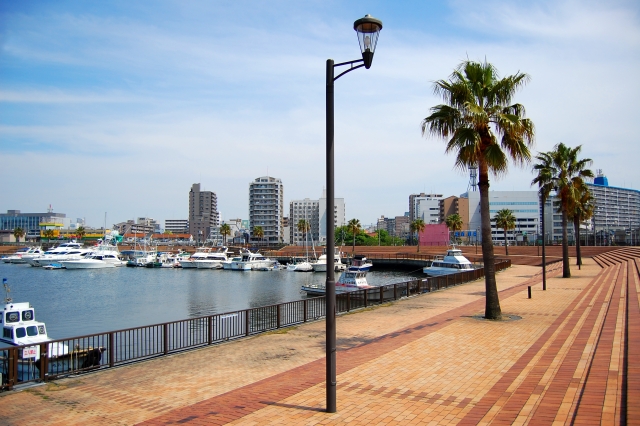 © photoAC 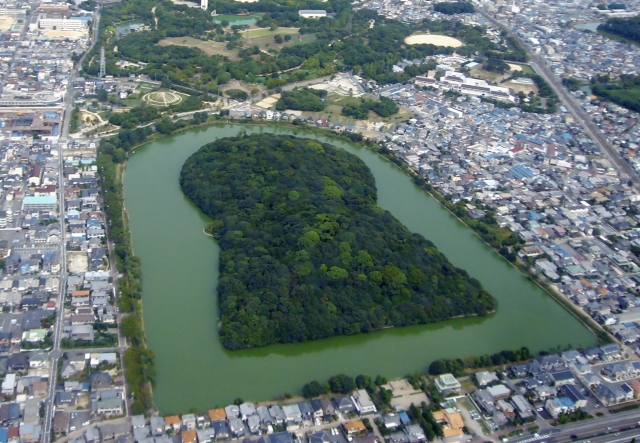 © photoAC 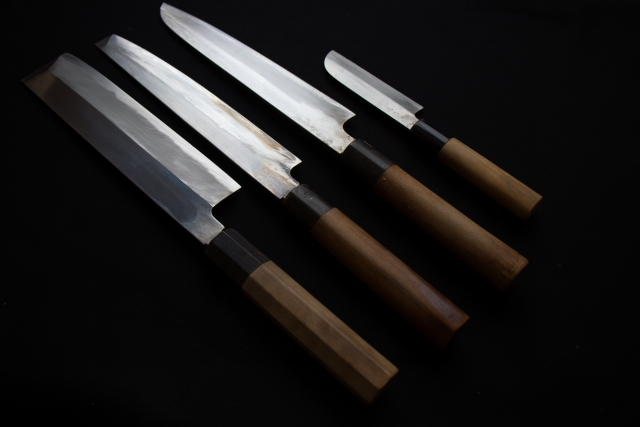 © photoAC 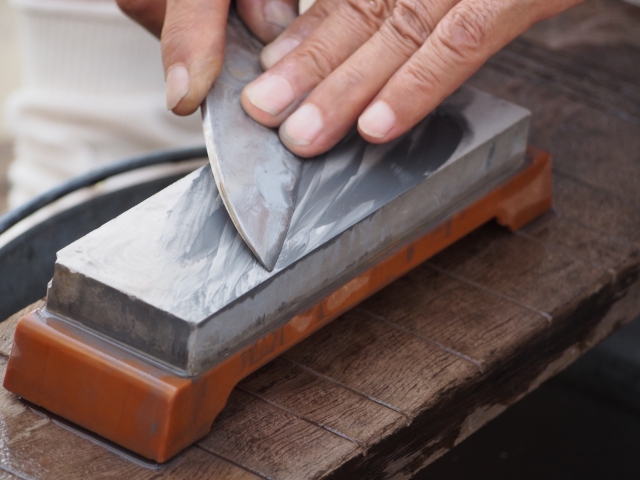 © photoAC 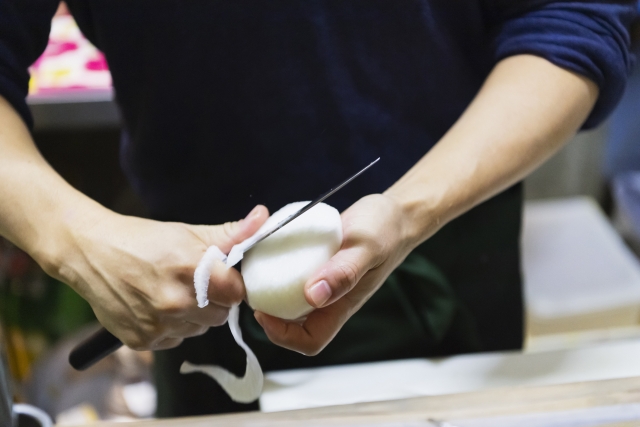 © photoAC |
| Next, the blade needs to be sharpened and polished. The craftsmen involved in this process have to ensure the blade does not warp, and that they end up with a straight blade with a superb cutting edge. Finally, another craftsman will attach a handle to the blade. The tang is heated and then inserted into a handle. This step requires craftsmen to be able to insert the tang skilfully, while maintaining a balanced centre of gravity in the handle that will make the knife comfortable for chefs to hold. Once it passes quality checks, the blade is officially a Sakai knife. Sakai knives made using this traditional hand-forging process have even been designated by the Ministry of Economy, Trade and Industry (METI) as a Traditional Craft of Japan. Sakai knives possess a few unique characteristics that make it the preferred choice in professional kitchens, the most important of which may be that Sakai knives are single-edged. Compared to double-edged knives, which are the norm, single-edge blades have an acute angle that enables it to cut smoothly and finely, without damaging the ingredients. This is especially helpful in Japan cuisine, in which fish and vegetables are central ingredients; whether it is soft and firm flesh of fish or delicate leaves of fresh vegetables, single-edged Sakai knives are able cut into these ingredients with damaging the fibre or membranes within, thus preserving its original flavour. The shape of the Sakai knife also makes it difficult for cut ingredients to stick to it while cutting. As each Sakai knife is hand-made, they tend to be expensive and custom orders can take months to fulfil. However, this has not dampened the popularity of these blades! As mentioned previously, Sakai knives dominate the local market, with over 90% of professional chefs using the brand. With the rising popularity of Japanese food overseas, Sakai knives may soon be found in professional kitchens worldwide! | 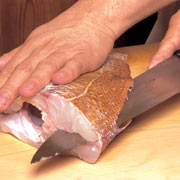 © Kono Toshihiko 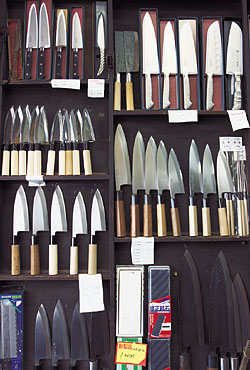 © Kawada Masahiro |
| Many studios still retain their premises in the city, with some even housing exhibits that tourists can peruse. Some studios even offer tours, allowing visitors a closer glimpse into the process of making Sakai knives. If you ever visit Osaka and find yourself in need of a new set of kitchen knives, do consider visiting Sakai City for a slice of Japanese history and innovation. |
Resources
|
Appeal of World Renowned Sakai Knives. Retrieved 17 November 2021, from https://www.sakai-tcb.or.jp/en/feature/detail/28 Sakaiuchi Knifes. (2014). Retrieved 17 November 2021, from https://japan-brand.jnto.go.jp/crafts/metal_work/23/ |
|
Japan Creative Centre 4 Nassim Road, Singapore 258372 +65 6737 0434 / jcc@sn.mofa.go.jp https://www.sg.emb-japan.go.jp/JCC/ Nearest parking at Orchard Hotel & Delphi Orchard |
 |